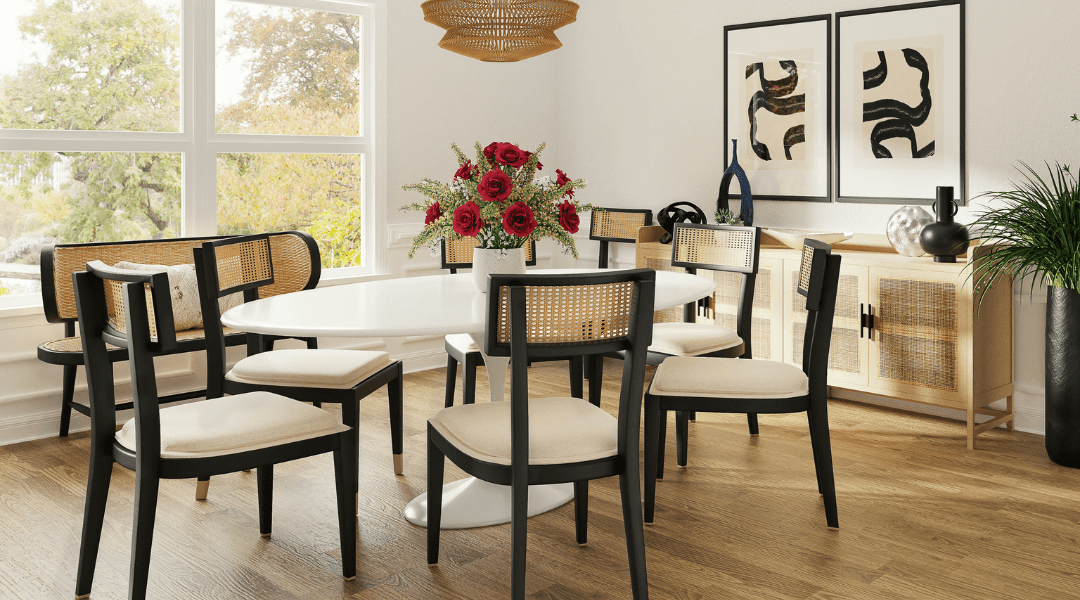Before you start decorating any room, there are three essential steps that will set you up for success: define your purpose and style, assess your space, and set a realistic budget. These steps help you create a space that’s cohesive, functional, and uniquely yours.
Decorating a room is such an exciting journey. You can almost see it already—a cozy living room that draws everyone in, a bedroom that’s your personal retreat, or maybe a dining room that brings friends and family together. But if you’ve ever felt that rush to dive straight in, you’re not alone. It’s tempting to just start picking out furniture, choosing colors, and ordering those Pinterest-worthy accents that caught your eye.
But here’s the thing: without a plan, decorating can quickly become overwhelming. You might find yourself staring at a room full of mismatched pieces, wondering where things went off track. This is exactly where many homeowners get stuck—excited to start, but ending up with a space that doesn’t quite feel cohesive or functional.
That’s why, before you even start shopping or picking up a paintbrush, there are a few steps that make all the difference. Think of it like preparing for a trip; you wouldn’t jump on a plane without first deciding where you’re headed and what you need to bring. Just like travel, a little preparation at the start will ensure that you’re moving in the right direction, toward a space that not only looks amazing but also fits perfectly with your lifestyle.
In this post, I’m sharing the three essential things to do before decorating any room. These steps are simple, but they’re the foundation of creating a space that feels intentional, beautiful, and entirely you. So, before you take that first decorating leap, let’s make sure you’re set up for success.
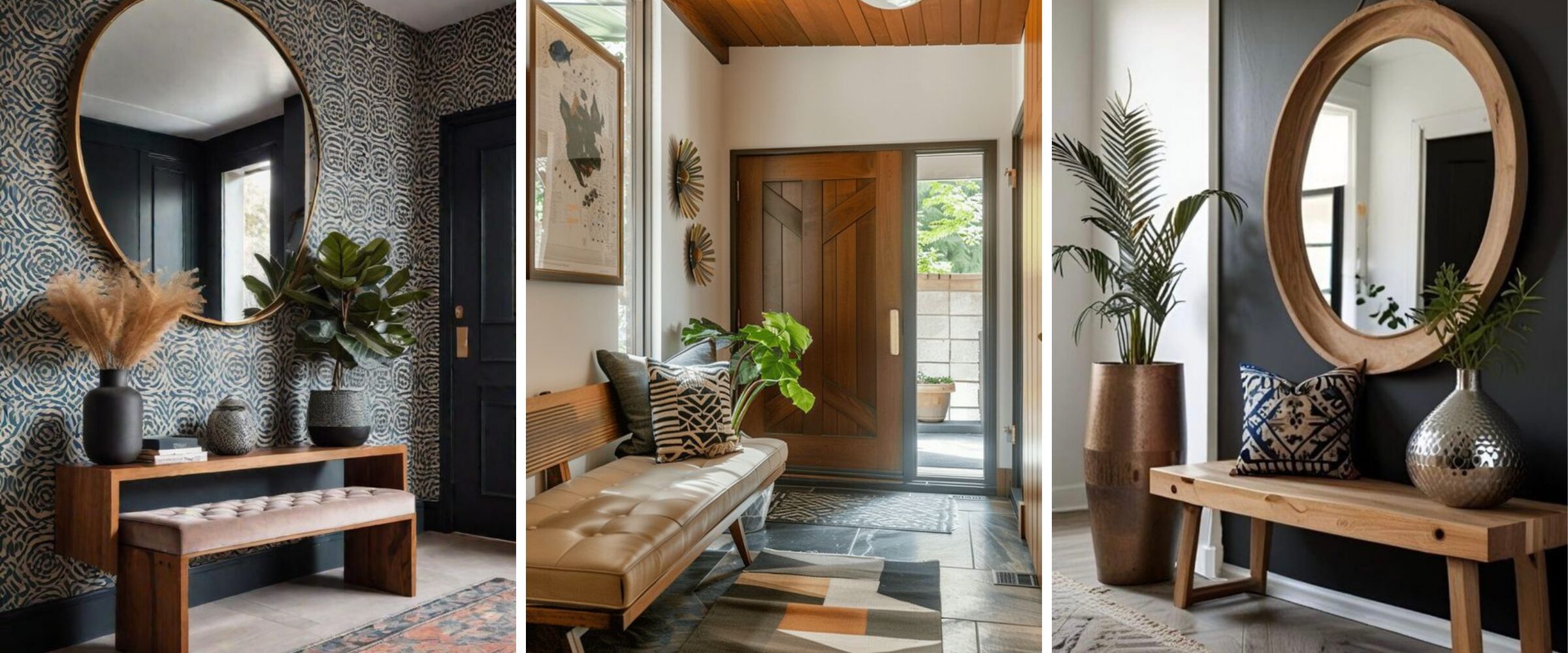
Images via Pinterest.
1. Define Your Purpose and Style
One of the biggest secrets to creating a beautiful, cohesive space is to begin with a clear sense of what you want from the room and the design style that reflects your personal taste.
Identify the Room’s Purpose
Every room has a purpose, and defining that purpose from the start is key to a successful decorating plan. Think about how you’ll use this space on a daily basis.
Is it a living room where you’ll entertain guests or a bedroom meant to be a calm retreat? If it’s a home office, you might need a layout that maximizes productivity, while a family room might be all about comfort and durability.
This is one of the key questions we clarify with our clients from the outset. We can’t design a space without knowing how our clients are going to use it.
Knowing the room’s purpose will guide all your design decisions and keep you from getting distracted by trends or items that don’t serve the space’s function.
Explore Your Personal Style
Once you know what you need from the room, it’s time to dive into the fun part: figuring out your personal style! Start by collecting inspiration—whether it’s from Pinterest, Instagram, or design magazines—and notice what stands out to you. Are you drawn to the clean lines of a modern aesthetic, the cozy warmth of farmhouse design, or maybe the eclectic charm of boho?
If you have no idea where to start, our design style quiz is the perfect place. The quiz tells you the top 3 styles you gravitate towards and it will link you to more detail on each of these styles. Use this knowledge to search on Pinterest, Instagram and the like.
Understanding your style can be transformative. You’re not just decorating a room; you’re creating a space that reflects who you are. And when you get this right, everything else falls into place naturally. It will help you understand how to mix and match furniture and decor. And knowing your style means it will be easier to figure out which shops carry items that you are going to like.
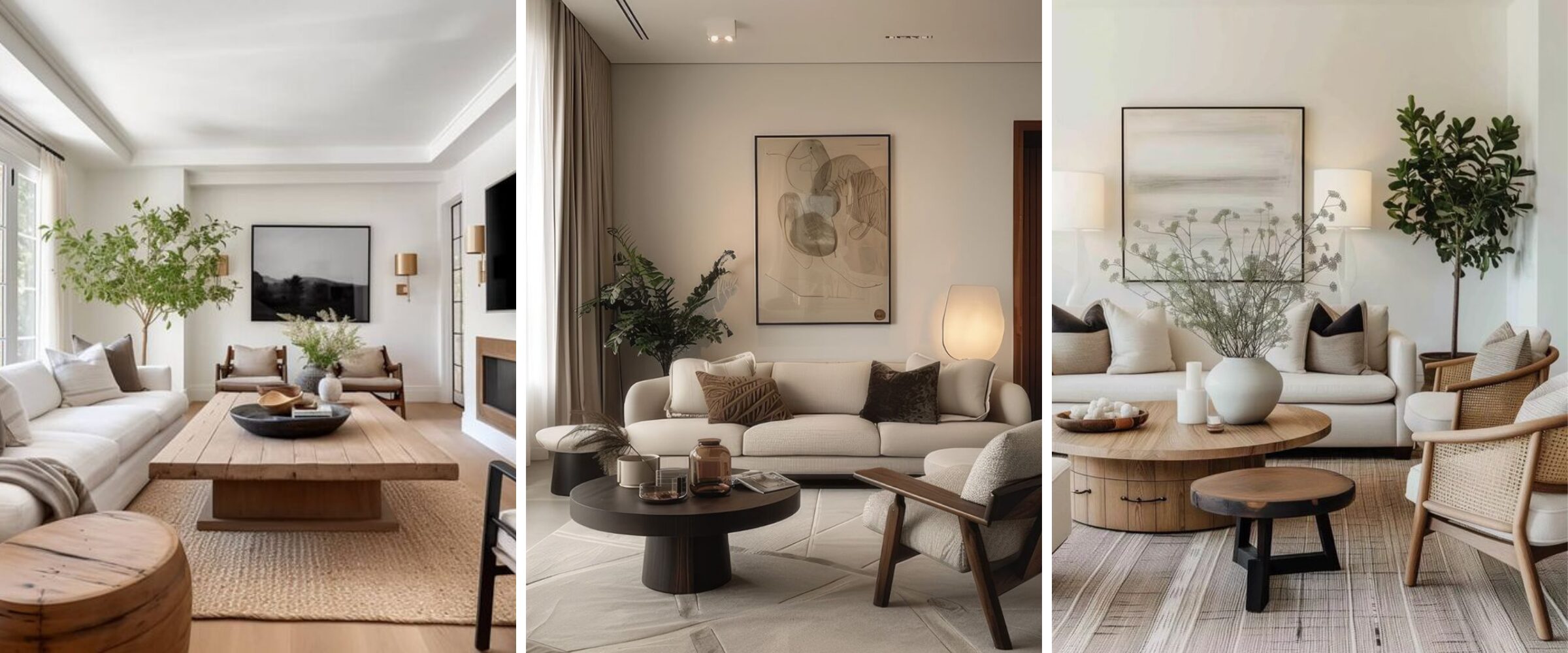
Images via Pinterest.
2. Assess the Space and Plan the Layout
With your purpose and style in mind, the next step is to take a good look at your space. This is where you get practical—because a beautiful design only works if it functions well, too. And for it to function well, you really need to understand the space you have and how to use it to your best advantage.
Measure and Sketch the Room
Start by measuring every wall, window, and doorway in the room. Draw a rough sketch and jot down the dimensions, so you know exactly how much space you have to work with. This step can save you from buying a couch that doesn’t fit or choosing a coffee table that’s way too big. Having a layout plan is like having a roadmap—it keeps you focused and makes the decorating process smoother.
When we design a space at Daakor, we always start with the floor plan. Based on the space that’s available we determine what size furniture we need so that we have the right scale in the room and how to lay it out so that it functions the way our clients need. And that also means we need to get the right flow.
Identify Focal Points and Traffic Flow
As you plan, think about the room’s focal points and how people will move through the space. A focal point could be anything that naturally draws attention, like a fireplace, a window with a view, or even a large piece of artwork. Arranging your furniture around these focal points will create a sense of balance and make the room feel intentional.
Also, pay attention to traffic flow. Make sure there’s enough space for people to move around comfortably. When you create a layout that works with your lifestyle, the room feels inviting and functional.
When I work with a floor plan, I literally draw lines that show the traffic flow. It helps remind me as we finalize the size, scale and shape of furniture pieces we need.
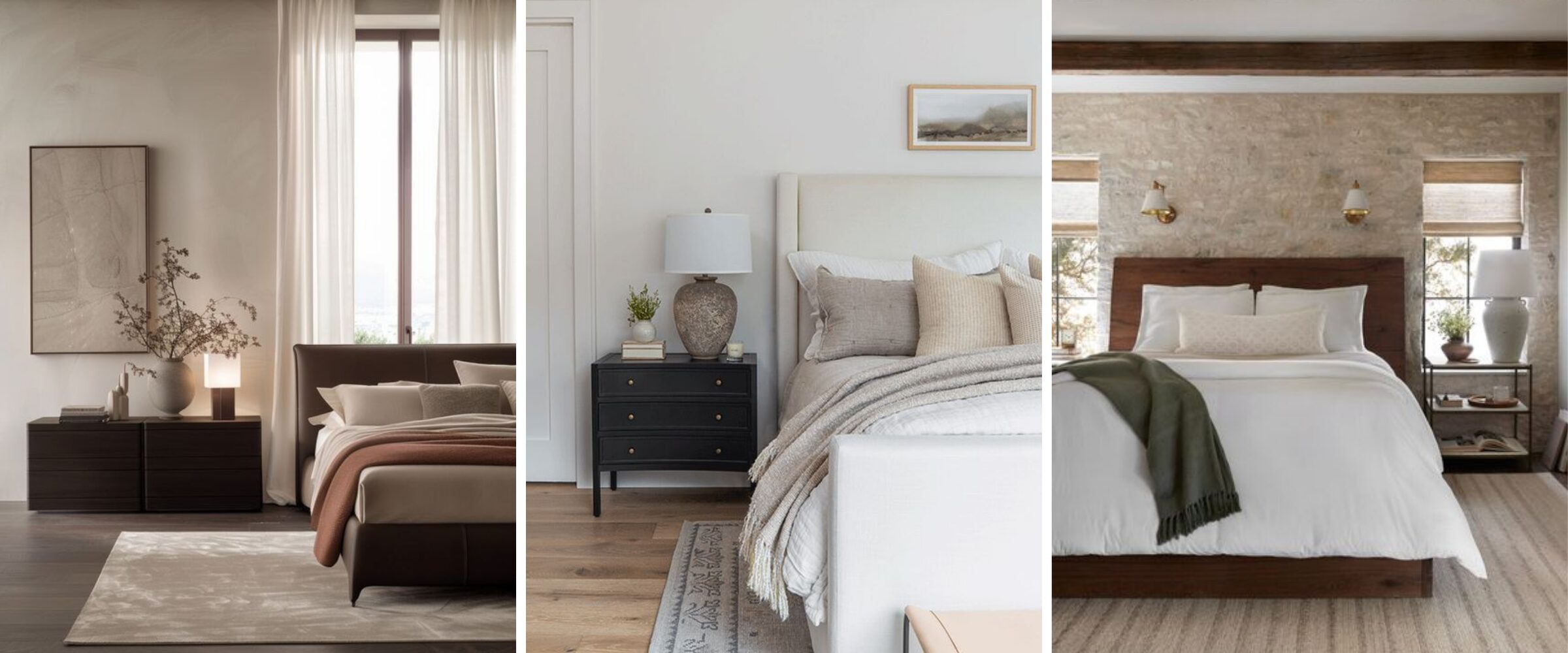
Images via Pinterest.
3. Set a Realistic Budget
Budgeting may not be the most exciting part of decorating, but it’s definitely one of the most important. A well-planned budget keeps you on track, helping you make choices that fit both your vision and your wallet.
Determine Your Priorities
Begin by identifying what’s most important to you in the room. Is it a high-quality sofa that can stand up to years of use, or maybe a statement light fixture that sets the mood? Knowing your priorities will help you allocate your budget to the items that matter most.
Make sure that your budget is realistic. Often our mindset about money and worthiness play a role in how we might budget for something like a home renovation or a redecorating project. You can research online to get a good understanding of price ranges for pieces of furniture that fall within your style and how you need your space to function.
>> Grab our comprehensive investment guide here.
Plan for Contingencies
Decorating projects often come with surprises. Maybe you’ll discover that you need extra storage or decide to upgrade the area rug after seeing the room come together. Whatever it is, setting aside a little extra in your budget for contingencies helps you handle these unexpected costs without stress.
I often say expect the unexpected. Especially when you are in the installation or implementation stage of your project. Things might not go exactly how you expect and that may mean you’ll need to spend a little extra or it might just mean you need to pack a bit of patience. Trust me, the outcome will be worth it all.
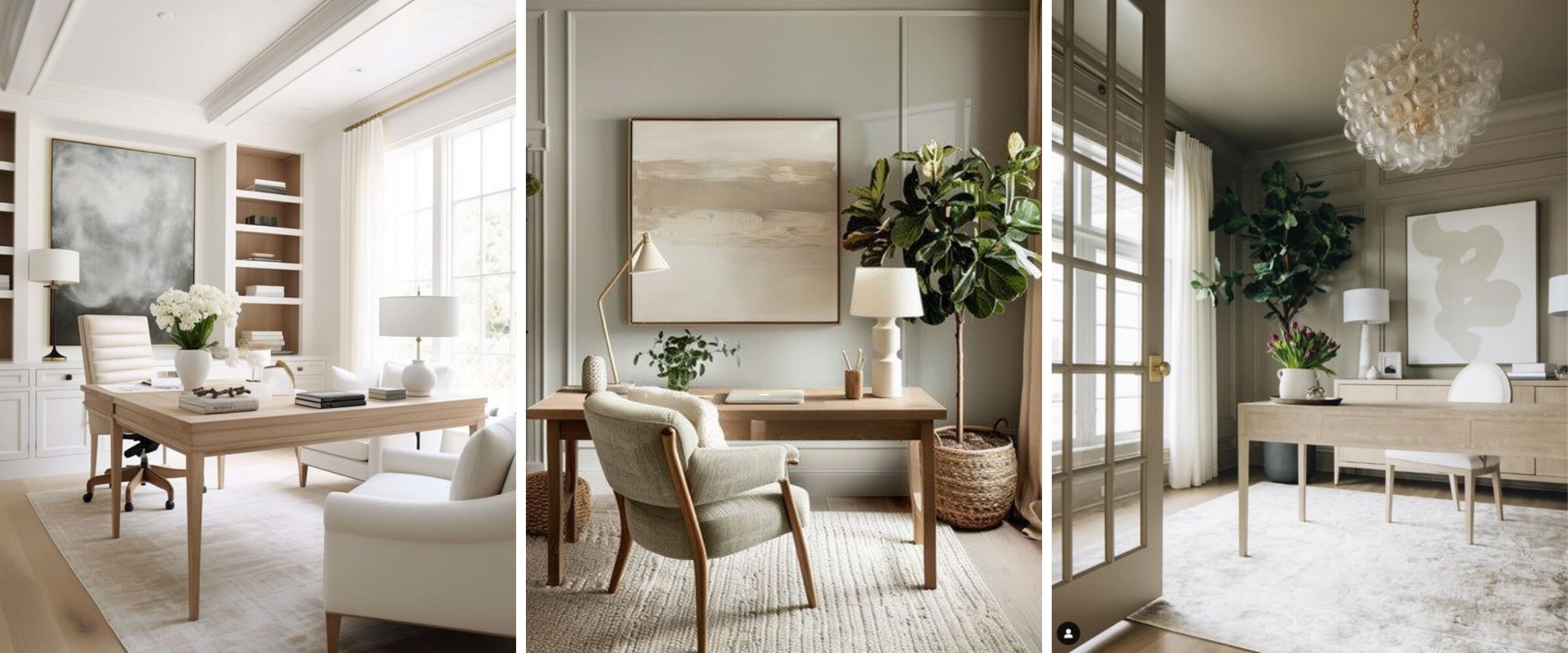
Images via Pinterest.
Decorating a room is a journey, and like any good journey, it’s the preparation that makes the adventure smooth, enjoyable, and ultimately successful. By taking the time to define your purpose and style, assess your space, and set a realistic budget, you’re giving yourself a clear roadmap. These foundational steps might seem simple, but they’re the keys to designing a space that’s as functional as it is beautiful—and a room that truly feels like you.
Imagine walking into a room that just “works”—the colors feel harmonious, the layout flows, and every piece has a place and a purpose. That feeling of ease and satisfaction doesn’t come from luck or a quick shopping spree. It’s the result of knowing what you want, what the room needs, and what’s truly meaningful to you. When you build a strong foundation, you’re not just decorating; you’re creating a space that will bring joy to your everyday life.
As you move forward, don’t rush through these steps. Give yourself permission to plan thoughtfully, make intentional choices, and embrace the journey. Whether you’re reimagining a single room or giving your whole home a refresh, these essential steps will ensure that the end result is a space you love coming back to—a place that feels like home in the truest sense.
If you’re feeling inspired but need a little help putting it all together, we’re here for you! Reach out for personalized guidance or to explore how we can help you bring your vision to life. After all, your home deserves to be a place that reflects your style and supports your everyday needs, beautifully and effortlessly.

